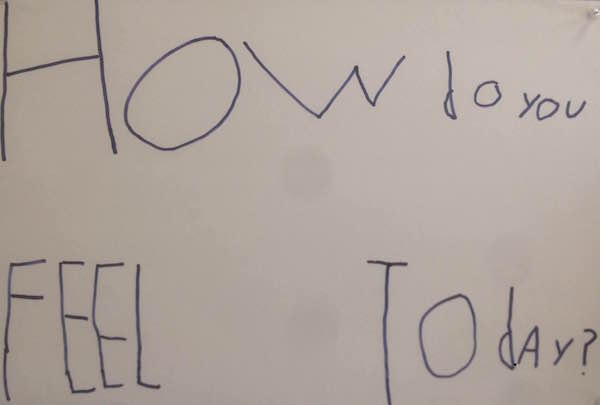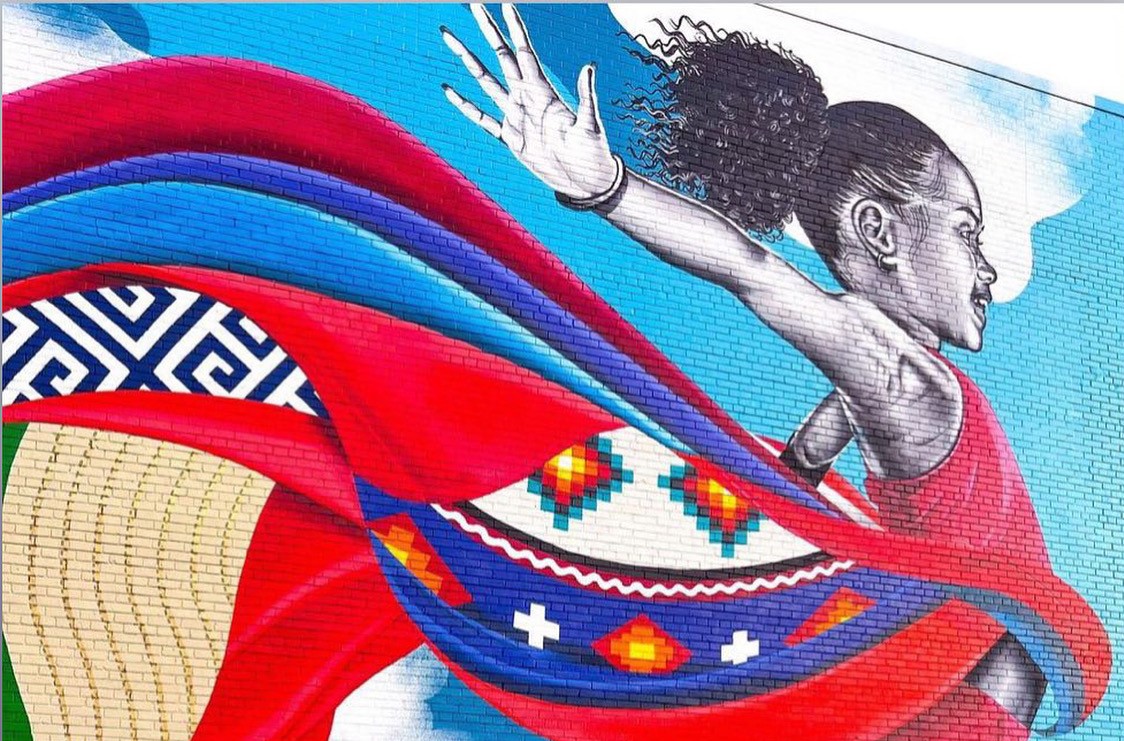Calm kids are happy. Calm kids stay cool. Calm kids share their feelings. Both at home and school. Calm kids give their body what it needs. Calm kids follow the rules. Calm kids are happy. Calm kids stay cool.
SWS kindergarteners learned the “Calm Kids” song – composed by kindergarten teacher Jere Lorenzen-Strait – at the January kick-off to the Calm Kids project, a 10-week social-emotional curriculum designed by Mr. Jere and fellow kindergarten teacher Margaret Ricks. Calm Kids is aimed at helping kindergarteners and their families learn about how to manage emotions, helping both kids and grown-ups negotiate feelings and maintain a sense of calm and self-control.
“Feelings don’t always stay the same”
At the March all-school community meeting, the kindergarten classes shared with the entire school their experiences identifying and processing their feelings – the culmination of weeks of hard work in the classroom and at home.
Mrs. Ricks explained that the kindergarteners have learned that “feelings don’t always stay the same … and one of the most important things is to know how to identify your feelings before you can take care of them.”


After the all-school meeting, each class visited the entryway bulletin board to put a sticker on the face that matched how they felt at at time. This was a way for all students to practice naming their feelings and for students (and grown-ups) to see how others at school are feeling – which helps contribute to a school full of calm kids (and calm grown-ups, too).
Calm Kids in Class and at Home
Mrs. Ricks explained at a family meeting at the beginning of the program in January, “We will work on knowing what to do when you have trouble with a sister or brother or friends on a play date, how to keep just the right motor speed at school.” Over the winter, Mrs. Ricks and Mr. Jere worked with their kindergarteners on a variety of classroom activities aimed at helping the children name, process, and negotiate their feelings, including regular entries in a feelings journal the creation of portraits of the children demonstrating various feelings (e.g. “angry,” “frustrated,” “happy” faces).
In addition to in-classroom activities, the Calm Kids project includes a family engagement component, with thought-provoking questions, explanations of the importance of different ways of helping children understand and process their feelings, and a variety of try-this-at-home activities.
For instance, in a unit called “I Want It,” families learned that “when children feel an injustice, they are not always able to express their resulting feelings that helps others to understand. One of the building blocks for standing up for one’s rights is learning to make one’s own choices, to be an active learner and playmate.” Parents were encouraged to observe how their children behave when they want something, and to actively encourage their growing ability to make choices for themselves. “Encourage your child to make choices in their daily routine. … Invite your child to do things for themself whenever possible. When your child is in conflict with another child, recommend that the children explain to each other how they feel by using a ‘request.’ When you took my book, it made me feel angry. Will you agree not to take my book again?”
Mr. Jere hopes that “The Calm Kids project will provide kids and families the skills to talk about conflict, regulate strong emotions, and share feelings.”
Calm Kids Project is Part of Broader Family Engagement
The Calm Kids project part of the kindergarten teachers’ yearlong participation in the Family Engagement Collaborative, a partnership between DCPS and the Flamboyan Foundation, which included home visits early in the school year to strengthen relationships with students and their families. Mr. Jere and Ms. Ricks are featured in this short video about the Family Engagement Collaborative.

